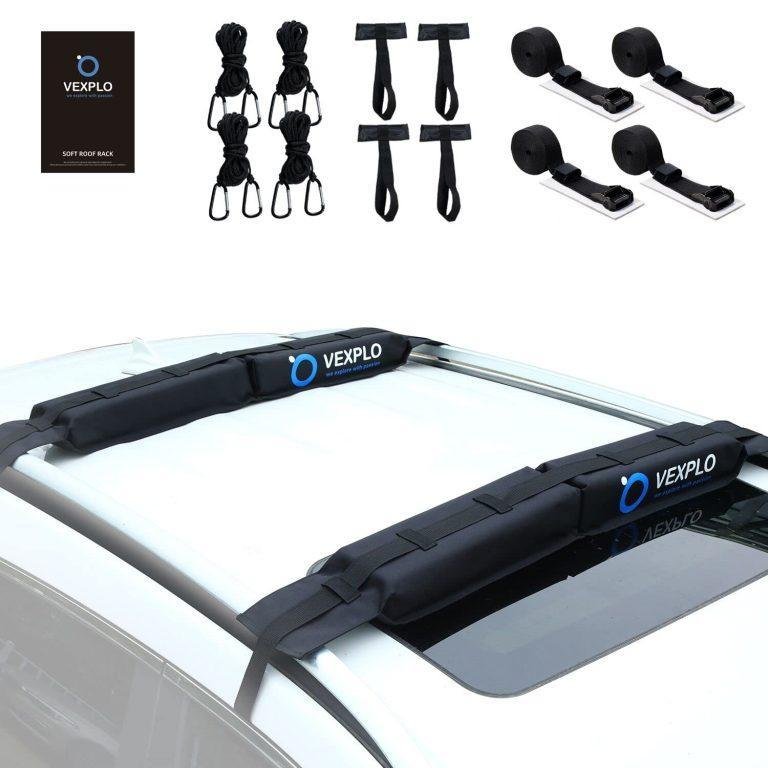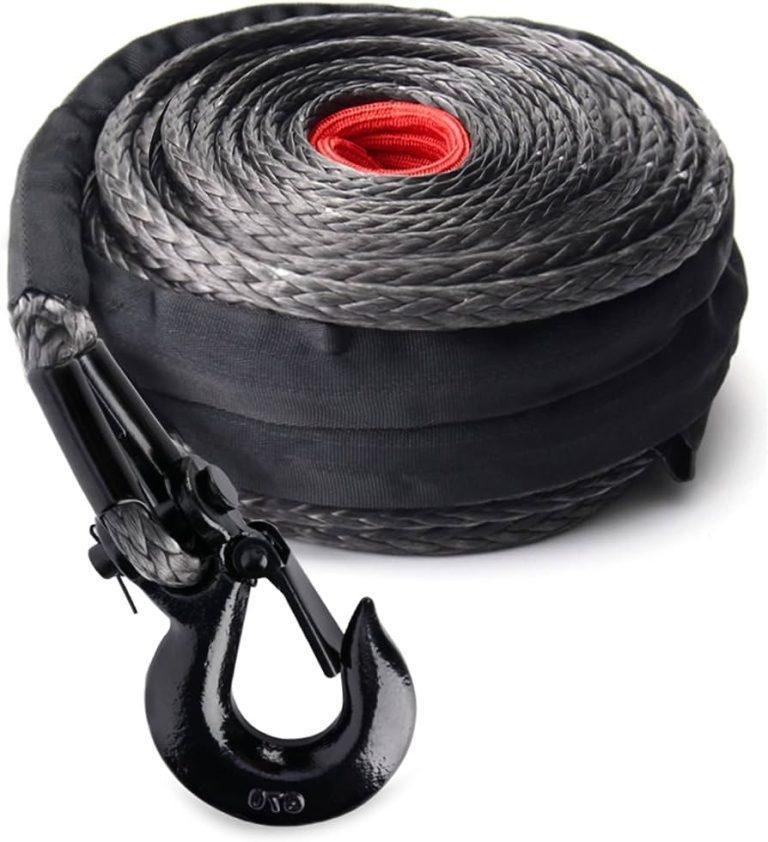A hydraulic lift is a machine used to raise or lower objects using fluid pressure. It works by transmitting force through an incompressible fluid, typically oil or water, to create movement.
This versatile lifting mechanism is commonly used in car repair shops, construction sites, and warehouses for a variety of heavy lifting tasks. Hydraulic lifts offer a reliable and efficient solution for vertical transportation and are known for their strength, stability, and precision.
With their ability to handle heavy loads and provide smooth and controlled movement, hydraulic lifts are essential in many industries where safe and reliable lifting is required. So let’s dive deeper into how hydraulic lifts work and the various applications in which they are extensively used.

Credit: www.nola.com
What Is Hydraulic Lift?
A hydraulic lift is a mechanism that utilizes hydraulic fluid to lift heavy objects. It operates by applying force through a piston, allowing the fluid to push against a larger area, resulting in the lifting action. Hydraulics lifts are commonly used in automotive repair shops and building construction.
Hydraulic lift is a crucial equipment used in various industries for lifting heavy objects or machinery. It relies on the power of fluids to generate force, making it an efficient and reliable solution for lifting applications. Let’s delve deeper into the definition and explanation of hydraulic lift, understand its importance in various industries, and explore its key components.
Definition And Explanation Of Hydraulic Lift:
- Hydraulic lift is a mechanical system that utilizes the principles of fluid mechanics to lift heavy objects or machinery.
- It involves the use of an incompressible fluid, typically hydraulic oil or water, to transmit force from one point to another within the system.
- The primary components of a hydraulic lift include a hydraulic pump, cylinders, valves, and fluid reservoirs.
- When hydraulic fluid is pressurized using the pump, it flows through the system, exerting force on the cylinders, which in turn raises or lowers the load.
- One of the key features of hydraulic lift is its ability to generate high amounts of force with relatively small input forces, making it ideal for lifting heavy objects.
- The force multiplication is achieved through the principle of pascal’s law, which states that any change in pressure applied to a confined fluid is transmitted equally in all directions within the fluid.
- This property allows hydraulic lift to provide smooth and precise lifting movements, making it a preferred choice in various industries.
Importance Of Hydraulic Lift In Various Industries:
- Hydraulic lifts play a crucial role in the automotive industry by providing support for vehicle maintenance and repairs. They are used in auto shops and garages to hoist vehicles for inspecting, repairing, or replacing parts.
- In construction and manufacturing industries, hydraulic lifts are widely utilized for lifting heavy equipment, materials, and structures. They enable efficient loading and unloading of materials and facilitate the assembly or dismantling of large structures.
- Hydraulic lifts are extensively employed in warehouses, logistics, and shipping industries to streamline the movement of goods. They enable the vertical transportation of heavy pallets, crates, and containers, ensuring efficient storage and retrieval processes.
- The healthcare industry relies on hydraulic lifts in hospitals, clinics, and nursing homes to safely transfer patients from beds to wheelchairs, bathtubs, or examination tables. These lifts minimize the risk of injuries to both patients and healthcare professionals.
- Hydraulic lifts also find applications in the entertainment sector, particularly in stage equipment. They are used for lifting and moving props, lighting fixtures, and performers, providing dynamic and visually appealing stage setups.
Key Components Of A Hydraulic Lift:
- Hydraulic pump: The pump is responsible for pressurizing the hydraulic fluid and ensuring its proper flow through the system. It converts mechanical energy into hydraulic energy.
- Cylinders: These are the main lifting elements of the hydraulic lift. They consist of a piston and a cylinder barrel, where the hydraulic fluid exerts force to move the piston and raise or lower the load.
- Valves: Various types of valves, such as control valves, relief valves, and check valves, are used in hydraulic lifts to regulate the flow and pressure of the hydraulic fluid. They ensure the smooth operation and safety of the lift.
- Fluid reservoir: The reservoir serves as a storage and cooling system for the hydraulic fluid. It helps maintain an adequate fluid level and dissipate heat generated during the lift’s operation.
Hydraulic lifts are essential equipment in numerous industries, offering efficient and reliable means of lifting heavy objects. Their ability to generate high force with minimal input makes them an indispensable tool in automotive, construction, manufacturing, healthcare, and entertainment sectors. Understanding the key components of hydraulic lifts enables better appreciation of their functionality and significance in various applications.
Understanding The Power Behind Hydraulic Lift
Hydraulic lift: unleashing the power of fluid mechanics to lift heavy loads effortlessly. This technology harnesses the force generated by pressurized fluids to raise and lower objects with precision and strength. Discover the science behind this incredible innovation.
Hydraulic lifts are an essential part of numerous industries, allowing heavy objects to be lifted with ease. The key to their remarkable strength lies in the power of hydraulic fluids, which enable the lifting mechanism. Let’s delve into the working principle of hydraulic lifts, the role of hydraulic fluids, and the calculations involving pressure and force.
Working Principle Of Hydraulic Lifts:
- Hydraulic lifts operate on the principle of pascal’s law, which states that when there is an increase in pressure at any point in a confined fluid, the same increase occurs throughout the container.
- The lift consists of two connected cylinders, one smaller (the master cylinder) and one larger (the slave cylinder), filled with incompressible hydraulic fluid.
- When a force is applied to the smaller cylinder by, for example, pushing down on a lever, it generates pressure that is transmitted equally to the larger cylinder.
- This increased pressure in the larger cylinder enables it to lift heavier loads, multiplying the force applied initially.
How Hydraulic Fluids Enable Lifting Mechanism:
- Hydraulic fluids play a crucial role in the lifting mechanism of hydraulic lifts. They provide the means for transferring force from the master cylinder to the slave cylinder, allowing heavy loads to be lifted effortlessly.
- Hydraulic fluids are specially formulated to have low compressibility, ensuring that the force applied at one end of the system is transmitted instantaneously to the other end.
- These fluids also act as lubricants, reducing friction within the lift system and minimizing wear and tear on the cylinders and pistons, thus increasing the efficiency and longevity of the lift.
Pressure And Force Calculations In Hydraulic Lifts:
- Pressure and force calculations are fundamental to understanding how hydraulic lifts operate and determining their lifting capacity.
- Pressure in a hydraulic lift is calculated by dividing the force applied to the master cylinder by the area of the smaller cylinder.
- Force in the larger cylinder is then determined by multiplying the pressure by the area of the larger cylinder.
- These calculations allow engineers to design and optimize hydraulic lifts based on the specific requirements of the application, ensuring safe and efficient lifting operations.
By harnessing the power of hydraulic fluids, hydraulic lifts provide a reliable and efficient solution for lifting heavy objects. Understanding the working principle, the role of hydraulic fluids, and the importance of pressure and force calculations empowers us to fully comprehend the power behind hydraulic lifts.
Applications And Benefits Of Hydraulic Lift
Hydraulic lifts are versatile machines that use liquid pressure to raise heavy objects, making them efficient in various industries like automotive and construction. From car repair shops to warehouses, the applications and benefits of hydraulic lifts are extensive, offering ease of operation, increased safety, and improved productivity.
Hydraulic lift technology has become an integral part of various industries due to its versatility and efficiency. By utilizing fluid power, hydraulic lifts provide a means of lifting heavy loads or transferring objects or people with ease. In this section, we will explore the applications and benefits of hydraulic lift technology in the automotive, construction, and medical industries.
Additionally, we will discuss the advantages and disadvantages of utilizing hydraulic lifts. Let’s delve into the fascinating world of hydraulic lifts and discover their multitude of applications.
Automotive Industry: Hydraulic Lifts For Vehicle Maintenance
- Hydraulic lifts play a crucial role in the automotive industry, providing a safe and efficient means of vehicle maintenance or repairs.
- Lifts utilized in automotive workshops are typically equipped with hydraulic systems that employ fluid in generating power.
- These lifts can elevate vehicles to a desirable height, enabling mechanics to easily access the underside of cars for inspections, repairs, or oil changes.
- Automotive lifts are engineered to support various types of vehicles, from small cars to heavy-duty trucks.
- Mechanics can effortlessly maneuver the lift using hydraulic controls, making it a practical and time-saving tool for the automotive industry.
Construction Industry: Hydraulic Lifts For Heavy Lifting
- In the construction industry, hydraulic lifts are indispensable when it comes to heavy lifting or reaching elevated areas.
- These lifts are commonly used in warehouses, construction sites, or other industrial settings to transport heavy materials or equipment.
- Hydraulic lift systems efficiently convert the force exerted on fluid into mechanical power, allowing for the effortless lifting of substantial loads.
- Construction lifts are designed with stability and safety in mind, ensuring reliable operation even under demanding conditions.
- The hydraulic controls of these lifts enable operators to precisely position the load, enhancing productivity and reducing the risk of accidents.
Medical Industry: Hydraulic Lifts For Patient Transfer
- Hydraulic lifts find extensive use in the medical sector as well, specifically for patient transfer and mobility assistance.
- Medical lifts equipped with hydraulic technology provide patients with a safe and comfortable means of transferring from one location to another.
- These lifts are widely used in hospitals, clinics, and care facilities to facilitate activities such as transferring patients to and from beds, wheelchairs, or bath facilities.
- Hydraulic lift systems in the medical industry prioritize patient safety, ensuring smooth and controlled transfers to minimize the risk of discomfort or injury.
- With their adjustable height and supportive slings, hydraulic lifts offer medical professionals a practical and efficient way to assist patients with their mobility needs.
Advantages And Disadvantages Of Hydraulic Lift Technology
Advantages:
- Versatility: Hydraulic lifts can be customized to suit specific requirements, making them adaptable to various industries and applications.
- Smooth operation: The hydraulic system provides a smooth and controlled lifting experience, minimizing jolts or sudden movements.
- High load capacity: Hydraulic lifts are capable of handling heavy loads, making them ideal for tasks that require considerable strength.
- Precision and safety: Hydraulic controls enable precise positioning, ensuring accurate and safe operations.
- Reliability: Hydraulic lift systems are known for their durability and long-lasting performance, providing reliable functionality over extended periods.
Disadvantages:
- Maintenance: Hydraulic lifts require regular maintenance and inspection to ensure optimal performance and safety.
- Initial cost: The initial investment for hydraulic lift systems can be higher compared to other lifting mechanisms.
- Environmental impact: Hydraulic systems often require hydraulic fluid, which must be properly managed and disposed of to minimize environmental impact.
As technology continues to advance, hydraulic lift systems will likely evolve and improve, offering even more benefits for various industries and applications. Whether it’s in the automotive, construction, or medical sector, hydraulic lifts have proven to be an invaluable tool, streamlining operations, improving efficiency, and ensuring the safety of both equipment and personnel.
Automotive Industry: Hydraulic Lifts For Vehicle Maintenance
Hydraulic lifts in the automotive industry are essential for vehicle maintenance, providing efficient and reliable support. These lifts use hydraulic power to elevate vehicles, ensuring easy access for repairs, servicing, and inspections. With their sturdy construction and advanced hydraulic systems, these lifts ensure safety and convenience during maintenance procedures.
With the advancements in technology, the automotive industry has greatly benefitted from various innovations. One such innovation that has revolutionized the way vehicles are maintained is the hydraulic lift. These lifts provide a safe and efficient solution for auto repair shops, making the task of vehicle maintenance much easier for automotive technicians.
In this section, we will explore the different types of hydraulic lifts used in auto repair shops, the benefits they offer to automotive technicians, and the safety considerations associated with their use.
Types Of Hydraulic Lifts Used In Auto Repair Shops:
- Two-post lifts: These hydraulic lifts consist of two columns on either side of the vehicle, allowing for easy access to the underside. They are commonly used for routine inspections, tire changes, and minor repairs. Two-post lifts offer a space-saving solution, making them ideal for smaller auto repair shops.
- Four-post lifts: Ideal for heavier vehicles, four-post lifts offer excellent stability and weight-bearing capacity. They provide a secure platform for tasks such as wheel alignments, transmission repairs, and engine maintenance. This type of lift allows technicians to have easy access to different parts of the vehicle.
- Scissor lifts: As the name suggests, scissor lifts feature crisscrossing supports that extend upwards, lifting the vehicle. They are commonly used for tasks that require technicians to work at a specific height. Scissor lifts offer versatility and are often used for tasks like brake repairs, exhaust system inspections, and suspension work.
- Mobile lifts: Designed for flexibility, mobile lifts can be easily moved around the workshop. These lifts are mounted on wheels and feature a hydraulic system for raising and lowering the vehicle. Mobile lifts are a great option for auto repair shops that require mobility and the ability to work on vehicles in different locations.
Benefits Of Hydraulic Lifts For Automotive Technicians:
- Enhanced efficiency: Hydraulic lifts minimize the time and effort required to lift a vehicle, allowing technicians to focus on the task at hand. The ability to work at a comfortable height also reduces strain and fatigue, resulting in increased productivity.
- Improved safety: Hydraulic lifts provide a stable and secure platform, reducing the risk of accidents during vehicle maintenance. Technicians can safely access the underside of the vehicle without the need for jacks or ramps, ensuring a safer working environment.
- Accessibility: With the vehicle lifted off the ground, technicians have easy access to various components, making repairs and inspections more accessible. This enhanced accessibility improves the quality and accuracy of the work performed.
- Space optimization: Hydraulic lifts come in various sizes and configurations, allowing auto repair shops to optimize their workspace. The ability to lift vehicles off the ground frees up valuable space that can be utilized for other tasks, increasing overall efficiency.
Safety Considerations When Using Hydraulic Lifts In Auto Shops:
- Regular maintenance: Hydraulic lifts should undergo regular inspections and maintenance to ensure they are in proper working condition. This includes checking hydraulic fluid levels, inspecting cables and pulleys, and verifying the integrity of the lift structure. Regular maintenance helps prevent accidents and extends the longevity of the equipment.
- Proper training: It is crucial for automotive technicians to receive proper training on the safe operation of hydraulic lifts. This includes understanding the weight limits, properly positioning the vehicle, and adhering to safety protocols. Adequate training reduces the risk of accidents and injuries.
- Clear workspace: Technicians should ensure that the surrounding workspace is clear of any obstructions or hazards that may interfere with the operation of the lift. This includes removing tools, equipment, and debris that could potentially cause accidents.
- Load distribution: When using hydraulic lifts, it is important to distribute the load evenly to maintain stability. The weight of the vehicle should be evenly distributed on the lift platform, ensuring that it remains balanced throughout the maintenance process.
Hydraulic lifts have become an indispensable tool in the automotive industry, providing automotive technicians with a safe and efficient solution for vehicle maintenance. The different types of hydraulic lifts offer versatility, while the numerous benefits and safety considerations make them a valuable asset in any auto repair shop.
By utilizing hydraulic lifts, automotive technicians can enhance their productivity, improve safety standards, and provide high-quality service to their customers.
Construction Industry: Hydraulic Lifts For Heavy Lifting
Hydraulic lifts in the construction industry are essential for heavy lifting. Utilizing hydraulic power, these lifts offer efficient and reliable solutions for elevating heavy loads.
Hydraulic lifts play a crucial role in the construction industry, revolutionizing the way heavy lifting tasks are carried out. Through the ingenious combination of fluid mechanics and engineering, hydraulic lifts provide immense power and precision, making them indispensable on construction sites.
In this section, we will delve into the different types of hydraulic lifts used in construction, explore their advantages, and examine some successful case studies showcasing their effectiveness.
Different Types Of Hydraulic Lifts In Construction:
- Scissor lifts: These lifts are widely used in construction projects, thanks to their versatility and ability to provide vertical and horizontal movement. Scissor lifts consist of a series of crossed tubes mounted on a platform, which extends and retracts vertically. Offering stability and a generous lifting capacity, scissor lifts are ideal for tasks requiring heavier loads.
- Boom lifts: With their extending arm or “boom,” these hydraulic lifts facilitate access to elevated areas that are otherwise challenging to reach. Boom lifts are commonly used for activities such as window installation, painting, or repairing high-rise buildings. Their adaptability and significant reach make them a preferred choice for various construction projects.
Advantages Of Hydraulic Lifts In Construction Projects:
- Enhanced safety: Hydraulic lifts promote a safer working environment by eliminating the need for manual lifting and reducing the risk of physical strain or injury. Workers can transport heavy materials and equipment with ease, reducing the chance of accidents and ensuring everyone’s well-being.
- Increased efficiency: Hydraulic lifts streamline construction tasks, improving productivity and efficiency on-site. Their smooth and precise operation allows for quick and accurate positioning of heavy materials, reducing downtime and enhancing workflow. This efficiency translates into cost savings and timely project completion.
- Versatility: The versatility of hydraulic lifts is unparalleled, as these machines can be employed in various construction applications. Whether it’s moving supplies, accessing elevated areas, or carrying out maintenance work, hydraulic lifts offer the flexibility required for multiple tasks, making them a valuable asset on construction sites.
- Space optimization: Hydraulic lifts, particularly scissor lifts, offer compact designs that maximize space utilization on construction sites. Their vertical movement capabilities allow for efficient storage when not in use, minimizing the footprint and maximizing the available workspace.
Case Studies Highlighting Successful Use Of Hydraulic Lifts In Construction:
- Bridge construction project: A hydraulic boom lift was instrumental in constructing a bridge, enabling workers to access and install structural elements at different heights. The lift’s reach and stability facilitated efficient bridge assembly, reducing the overall project timeline while ensuring worker safety.
- High-rise building facade renovation: Scissor lifts were utilized for the renovation of a high-rise building’s exterior. These lifts provided easy access to different levels, allowing workers to effectively carry out tasks such as painting, window replacement, and facade repairs. The use of hydraulic lifts resulted in significant time savings and improved worker productivity.
- Warehouse expansion: Hydraulic lifts proved indispensable during the expansion of a warehouse, enabling the efficient movement of heavy equipment and materials. Scissor lifts allowed workers to work at elevated heights, ensuring smooth installation and optimization of the space. Thanks to hydraulic lifts, the warehouse expansion project was completed on schedule with minimal disruptions.
Hydraulic lifts are invaluable in the construction industry, offering versatility, improved safety, enhanced efficiency, and space optimization. These hydraulic marvels have revolutionized heavy lifting tasks, enabling construction projects to be completed more efficiently and effectively.
Medical Industry: Hydraulic Lifts For Patient Transfer
Hydraulic lifts are essential in the medical industry for safe and efficient patient transfers. These lifts use hydraulic power to smoothly elevate and move patients, providing comfort and reducing the risk of injuries for both patients and caregivers.
How Hydraulic Lifts Aid In Patient Transfer And Mobility:
- Hydraulic lifts are an essential tool in the medical industry for transferring patients from one place to another safely and efficiently. Here’s how hydraulic lifts aid in patient transfer and enhance mobility:
- Versatility: Hydraulic lifts come in various forms, including mobile floor lifts, overhead lifts, and sit-to-stand lifts. This versatility allows healthcare professionals to choose the most suitable type depending on the patient’s needs and the transfer environment.
- Patient safety: Hydraulic lifts are designed to prioritize patient safety during transfers. They offer stability and support, reducing the risk of falls and injuries. The lifts also come with secure harnesses and straps to keep patients securely in place while being transferred.
- Easy operation: Hydraulic patient lifts are easy to operate, requiring minimal physical effort from healthcare professionals. They often come with user-friendly controls, allowing smooth and controlled movement during transfers.
- Improved mobility: By utilizing hydraulic lifts, patients with limited mobility can experience improved mobility and independence. These lifts assist in transferring patients from beds to chairs, wheelchairs, or other locations, enhancing their overall comfort and quality of life.
Ensuring Safety And Comfort With Hydraulic Patient Lifts:
- Safety features: Hydraulic patient lifts are equipped with advanced safety features to ensure optimal patient care. Some common safety measures include emergency stop buttons, weight sensors to prevent overloading, and anti-entrapment devices.
- Comfortable transfers: Hydraulic lifts are designed with patient comfort in mind. These lifts often have padded slings or seats, providing a soft and supportive surface for patients during transfers. This ensures a comfortable experience while maintaining proper body alignment.
- Reduced physical strain: Hydraulic lifts eliminate the need for healthcare professionals to manually lift or support the weight of patients during transfers. This reduces the risk of musculoskeletal injuries and strains, promoting the overall well-being of healthcare providers.
- Dignity and privacy: Hydraulic lifts allow for dignified and private transfers, as they enable patients to be moved discreetly and safely. This helps maintain the patient’s sense of dignity and minimizes any discomfort or embarrassment they may feel during the transfer process.
Regulations And Standards For Hydraulic Lifts In Healthcare Facilities:
- Safety standards: Healthcare facilities need to adhere to specific regulations and safety standards when using hydraulic lifts. These standards are put in place to ensure the well-being of both patients and healthcare professionals. Some key standards include load capacity requirements, regular maintenance checks, and staff training on lift operation and safety protocols.
- Ada compliance: Hydraulic lifts used in healthcare facilities must meet the accessibility requirements outlined by the americans with disabilities act (ada). This ensures that patients with disabilities have equal access to proper transfer equipment and services.
- Proper installation: Hydraulic lifts should be installed by certified professionals following the manufacturer’s guidelines and industry standards. Proper installation ensures the lifts function correctly and safely, minimizing the risk of accidents or malfunctions.
- Periodic inspections: Healthcare facilities are required to conduct regular inspections of hydraulic lifts to identify any potential issues or defects. These inspections help maintain the lifts’ reliability, ensuring the safety of patients and healthcare providers.
- Staff training: Healthcare professionals involved in patient transfers using hydraulic lifts must receive thorough training on lift operation, safety procedures, and proper body mechanics. Training ensures efficient and safe transfers while minimizing the risk of injuries.
Remember, hydraulic lifts play a vital role in the medical industry, helping healthcare professionals transfer patients safely and comfortably. By adhering to relevant regulations and maintaining high standards, healthcare facilities can ensure optimal patient care and improved mobility for all individuals in need.
Frequently Asked Questions Of What Is Hydraulic Lift?
What Does A Hydraulic Car Lift Do?
A hydraulic car lift is a device that uses hydraulic power to elevate vehicles off the ground. It allows mechanics to easily access the undercarriage of a car for maintenance and repairs. The lift operates by pumping hydraulic fluid into cylinders, which then raise a set of arms or platforms that support the vehicle.
The hydraulic system is controlled by a set of switches or buttons that enable precise lifting and lowering of the car. This type of lift is commonly found in auto repair shops and garages, as it provides a safe and efficient way to lift cars for various services.
It is essential in facilitating tasks such as oil changes, tire rotations, and inspections. Overall, a hydraulic car lift is a valuable tool in the automotive industry, ensuring that vehicles are easily accessible and properly serviced.
What Is The Difference Between A Hydraulic Lift And An Elevator?
A hydraulic lift and an elevator are essentially the same, as both serve the purpose of transporting people or goods between different floors. However, there are some differences between them. A hydraulic lift is operated using a hydraulic system, which utilizes liquids under pressure to generate movement.
On the other hand, an elevator is powered by an electrical system, consisting of a motor and a pulley system. One notable difference is the maximum height they can reach. Hydraulic lifts are typically limited to around 60 feet, while elevators can reach much greater heights.
Another difference lies in their speed; hydraulic lifts tend to be slower compared to elevators. Additionally, hydraulic lifts often require a separate machine room, whereas elevators can be installed more flexibly without the need for additional space. Overall, while both serve the same purpose, elevators are more commonly used in taller buildings, while hydraulic lifts are preferred for shorter buildings or specific applications where cost or space is a consideration.
Why Do People Use Hydraulic Lifts?
People use hydraulic lifts because they are efficient, reliable, and versatile. Hydraulic lifts use fluid pressure to generate force, allowing them to lift heavy loads with ease. They are commonly used in industrial settings, construction sites, and even in residential buildings.
These lifts provide smooth and controlled movement, ensuring the safety of both the operator and the load being lifted. They can be operated easily and can reach great heights, making them ideal for tasks like loading and unloading goods, maintenance work, and transportation of heavy equipment.
Hydraulic lifts are also cost-effective in the long run as they require less maintenance and have a longer lifespan compared to other types of lifts. They are designed to handle heavy loads and can be customized to meet specific requirements.
Whether it’s lifting vehicles in an automotive repair shop or elevating people in a building, hydraulic lifts are a reliable and practical solution.
Which Is Better Hydraulic Lift Or Motor Lift?
The choice between a hydraulic lift and a motor lift depends on your specific needs. Hydraulic lifts are known for their durability, strength, and smooth operation, making them ideal for heavy-duty lifting and handling larger loads. They also require less maintenance and have a longer lifespan.
On the other hand, motor lifts are more compact, portable, and suitable for lighter loads. They are often used in smaller spaces or for occasional lifting tasks. Both types of lifts have their benefits and drawbacks, so it’s important to consider factors such as load capacity, space availability, budget, and frequency of use when making a decision.
Ultimately, the better choice will depend on your specific requirements.
Conclusion
Hydraulic lifts have revolutionized the way we transport heavy objects and people, making our lives easier and more efficient. These lifts use the power of fluids to smoothly and safely move loads from one place to another. Whether it’s elevating cars in auto repair shops or lifting heavy machinery in industrial settings, hydraulic lifts provide exceptional strength and reliability.
By understanding the principles behind hydraulic systems, we can appreciate the incredible force they generate. Remember, proper maintenance is crucial to ensure the longevity and functionality of hydraulic lifts. Regular inspections, fluid checks, and component replacements are essential to keep them running smoothly.
As technology continues to advance, we can expect to see even more innovative uses for hydraulic lifts in various industries. So next time you use an elevator or spot a hydraulic lift in action, take a moment to appreciate the power of this remarkable invention.





